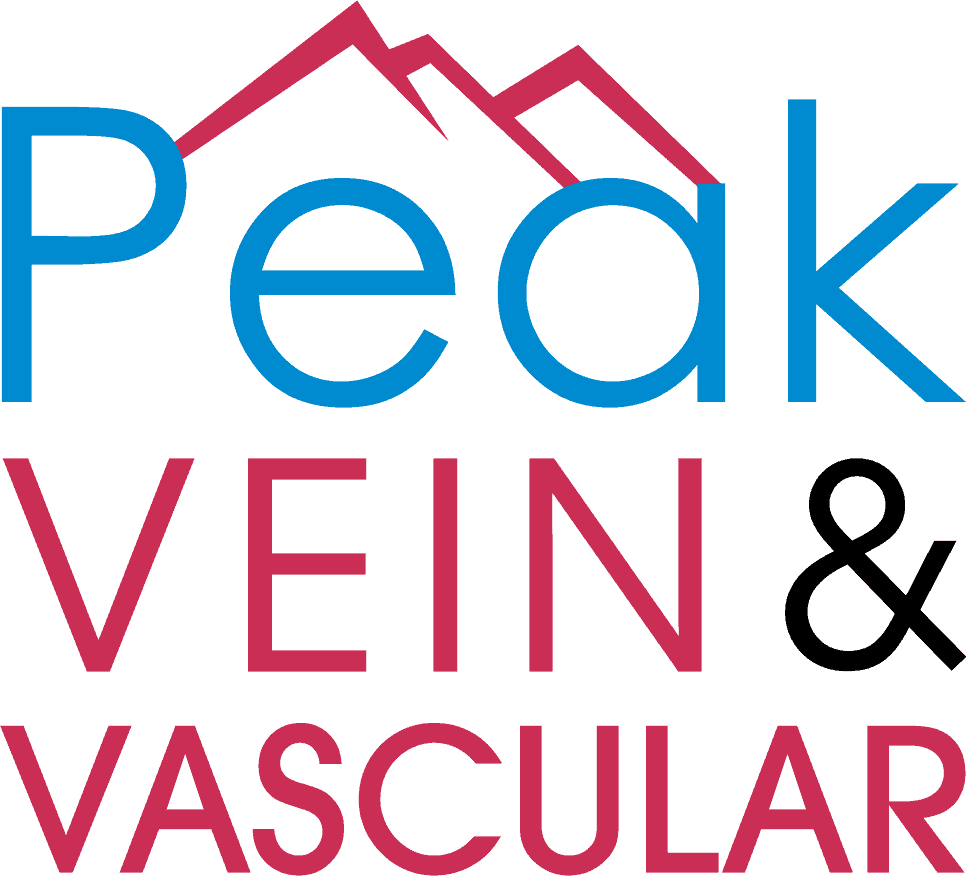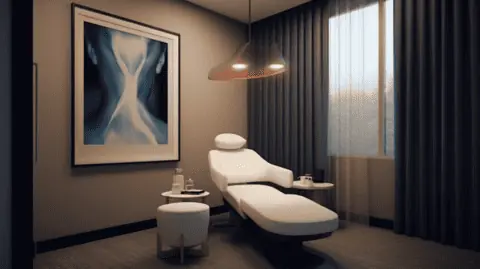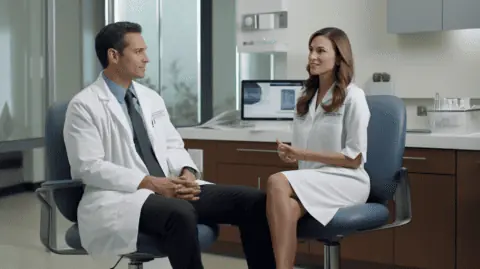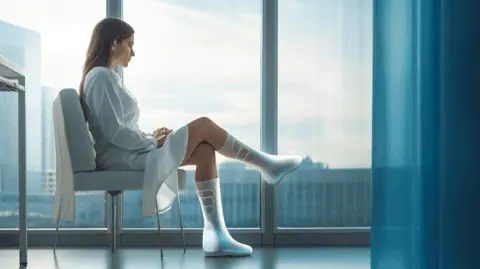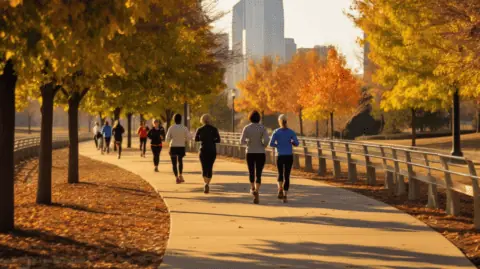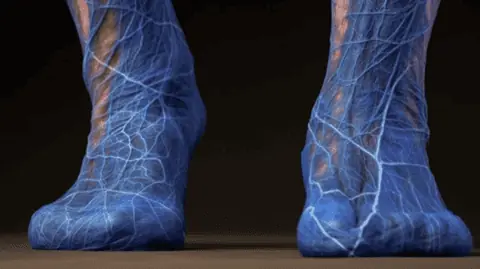If you’re a resident of Dallas, Texas, or its environs, chances are you’ve heard of or experienced varicose veins. While this common condition might seem merely cosmetic, it has far-reaching implications on one’s health and lifestyle. In this guide, we will take an in-depth look into varicose veins, their causes, symptoms, treatment options, and how the renowned bariatric surgery brand in Dallas, Peak Vein Vascular, is providing solutions.
What Are Varicose Veins?
Varicose veins are enlarged, twisted veins that often appear swollen and raised with a bluish-purple or red color. While they can occur in any part of the body, they are most commonly found in the legs. But what causes these unsightly and often painful veins? Let’s delve deeper.
Unraveling the Mystery of Varicose Veins
Our body’s circulatory system relies on a series of one-way valves that help blood flow from our legs back up to our heart. When these valves fail or become weak, blood can pool in the veins, causing them to stretch, twist, and turn varicose.
The causes are many and varied. It could be due to aging, which leads to wear and tear on the valves, resulting in their malfunction. Pregnancy also plays a role due to increased blood volume, but less blood flow from the legs to the pelvis. This change in circulation is designed to support the growing fetus but can unfortunately lead to varicose veins.
What’s more, if you have a family history of varicose veins, your chances of developing them increase. Prolonged standing or sitting, especially with crossed legs, obesity, and hormonal changes are other notable factors.
Identifying Varicose Veins: Symptoms and Diagnosis
Varicose veins often present visible signs. As such, you might notice veins that are dark purple or blue in color, or twisted and bulging like cords on your legs. Beyond the physical appearance, varicose veins can also cause an uncomfortable sensation and lead to serious health problems.
Symptoms: More than Just Appearance
Some of the common symptoms associated with varicose veins include an achy or heavy feeling in your legs, burning, throbbing, muscle cramping, and swelling in your lower legs. More severe symptoms might involve bleeding from the veins, a painful cord in the vein with red discoloration of the skin, or color changes, hardening of the vein, inflammation of the skin, or skin ulcers near your ankle — this could mean venous ulcers, which require immediate attention.
Knowing the symptoms is key, but understanding the diagnostic procedures helps you be better prepared when you seek professional help.
Diagnosis: Getting the Full Picture
Varicose vein diagnosis typically involves a physical examination where your doctor will examine your legs while you’re standing or sitting, to check for swelling veins. You might also be asked about any pain or symptoms you’re experiencing.
To confirm a diagnosis, your doctor might recommend an ultrasound test to check blood flow. This non-invasive test uses high-frequency sound waves to visualize the structure of veins in your legs and examine the blood flow. At Peak Vein Vascular, our team of experienced physicians employ advanced diagnostic tools to understand your condition and recommend appropriate treatment.
Speaking of treatment, let’s discuss the various options available.
Treatment Options for Varicose Veins
Whether you seek treatment for aesthetic reasons or to ease discomfort, there’s a wide range of options available. The right one for you will depend on your specific condition, medical history, and personal preferences.
Non-Invasive Treatments
Initial treatment of varicose veins may involve self-care measures such as exercising, losing weight, not wearing tight clothes, elevating your legs, and avoiding long periods of standing or sitting. Compression stockings may also be suggested. They are worn all day and help veins and leg muscles move blood more efficiently.
Minimally Invasive Treatments
When these measures fail to relieve symptoms, more advanced treatments may be necessary. These might include sclerotherapy, where a doctor injects small- and medium-sized varicose veins with a solution or foam that scars and closes those veins.
There’s also endovenous VNUS closure, where your doctor inserts a catheter into your varicose vein and uses radiofrequency energy to heat and seal it shut. Once the vein is closed, blood is rerouted to other healthy veins.
Other options include phlebectomy, laser surgeries, and high ligation and vein stripping. Each procedure has its unique benefits and risks, which our team is more than happy to discuss with you.
Insurance Coverage for Varicose Vein Treatment
Understanding insurance coverage can often feel like a daunting task. However, knowing what your insurance covers can help significantly in your decision-making process for varicose vein treatment.
While cosmetic vein treatment is typically not covered by insurance, most insurance plans, including Medicare, will cover treatments for symptoms related to venous insufficiency, such as swelling, aching, and pain. Peak Vein Vascular has put together an insurance guide to help you navigate this topic more comfortably.
Before embarking on any treatment plan, it’s always important to confirm your insurance coverage. It’s recommended to reach out to your insurance provider or use our insurance inquiry form for more detailed information.
Patient Experience at Peak Vein Vascular
Choosing where to have your varicose veins treated is an important decision. You want a place that not only provides advanced and comprehensive care but also prioritizes patient experience. At Peak Vein Vascular, we pride ourselves on our patient-focused approach.
A Proven Approach
Our approach to treating varicose veins is based on years of experience and state-of-the-art methods. We provide a wide range of services and treatments designed to offer you the best care possible.
Expert Physicians
Our team of doctors are experts in the field of vascular medicine. They are dedicated to providing individualized care to each patient, answering all your questions, and making your experience as comfortable as possible.
Testimonials
Don’t just take our word for it. Hear from patients who have walked this journey before. Our testimonials offer a glimpse into the quality of care and service you can expect at Peak Vein Vascular.
Remember, dealing with varicose veins is not merely about enhancing aesthetics, but it’s about improving your quality of life. As we continue to delve into the subject, let’s look at the aftercare and recovery process following varicose vein treatment.
Aftercare and Recovery: Getting Back on Your Feet
Once you’ve chosen the best treatment option with your specialist, you’ll want to know what the road to recovery looks like. Let’s dive into the specifics of aftercare following procedures like VNUS Closure and Phlebectomy.
Upon completion of the procedure, patients typically resume normal activities the same day. Regular walking is encouraged, but strenuous activities like heavy lifting should be avoided for a few weeks. Mild discomfort may occur, but it’s usually manageable with over-the-counter pain relief.
Patients are often asked to wear compression stockings for a certain period following the procedure to support the healing process. These stockings apply pressure to your lower legs, helping your blood vessels function better. Do remember to take the advice of your doctor seriously, as a full recovery contributes significantly to the success of the treatment.
While you’re on the mend, feel free to connect with Peak Vein Vascular’s supportive community through our Virtual Tours and the Blog, where you’ll find stories, tips, and further insights about varicose vein treatment.
Preventative Measures: Staying One Step Ahead
When it comes to varicose veins, prevention is just as important as treatment. Regular exercise, a balanced diet, and maintaining a healthy weight are fundamental steps towards preventing the occurrence or recurrence of varicose veins.
If your job involves long periods of standing or sitting, it’s essential to change positions regularly and take short walks during breaks. Compression stockings can also help improve blood flow and reduce the risk of varicose veins. You can learn more about these preventative measures from our informative FAQ page.
The Importance of Treating Varicose Veins in Dallas
In a bustling city like Dallas, it’s essential for its citizens to stay healthy and active. Varicose veins, left untreated, can significantly impact your mobility and quality of life. This is why Peak Vein Vascular is dedicated to helping the Dallas community understand, prevent, and treat varicose veins effectively.
Understanding varicose veins and their implications allows us to stay proactive about our vascular health. Remember, Peak Vein Vascular is here to guide you every step of the way, from Our Approach to the range of Services we provide, and finally, to celebrating your successful transformation with our Before and After gallery.
In conclusion, varicose veins are more than just a cosmetic issue. With the comprehensive information and resources provided by Peak Vein Vascular, you can confidently navigate your journey towards healthier, happier legs. Let’s wave goodbye to varicose veins and step into a future of improved vascular health in Dallas.
